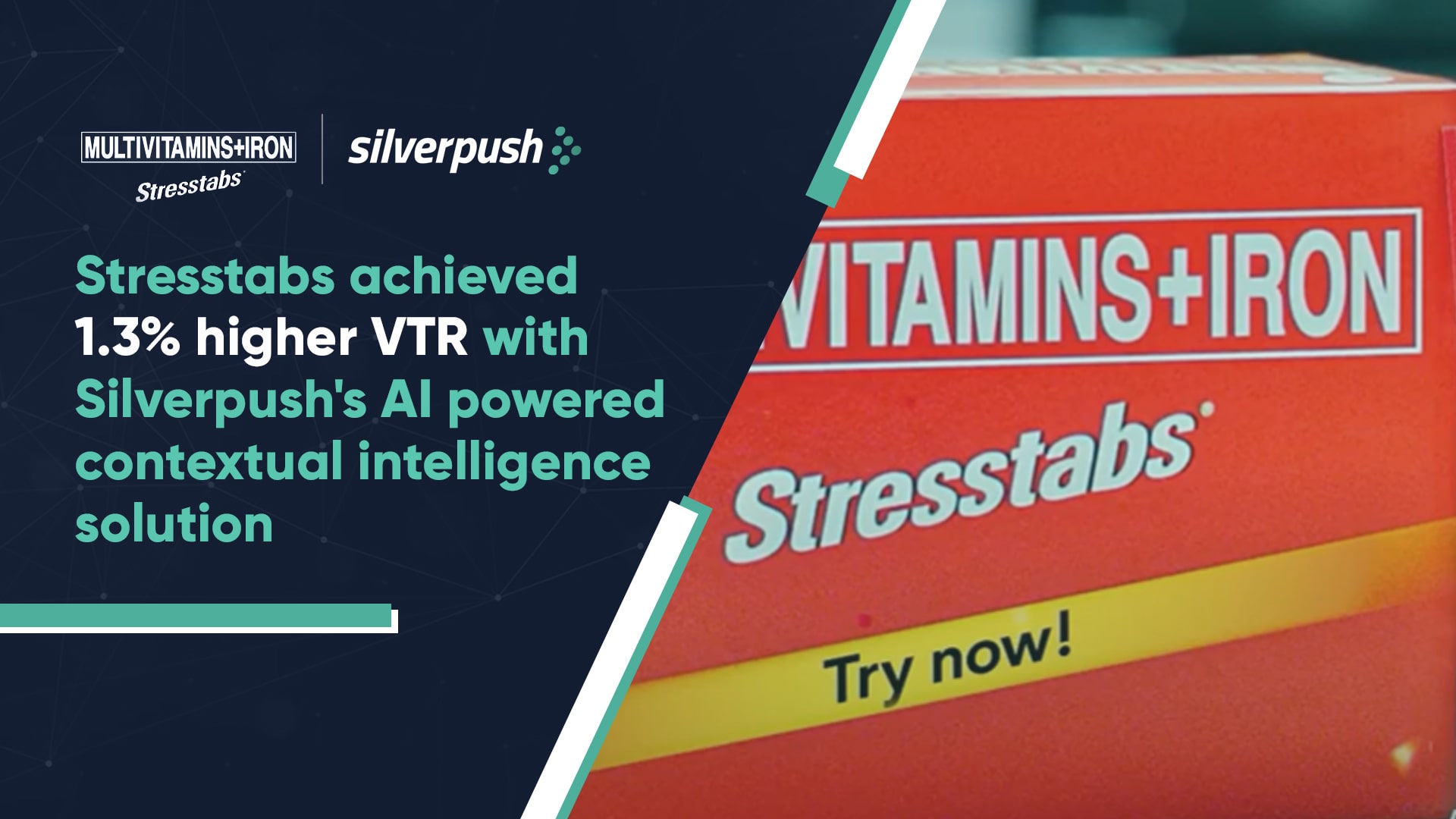Why News Content is a Goldmine for Advertisers: Debunking Brand Safety Myths
PUBLISH DATE: 23 October 2024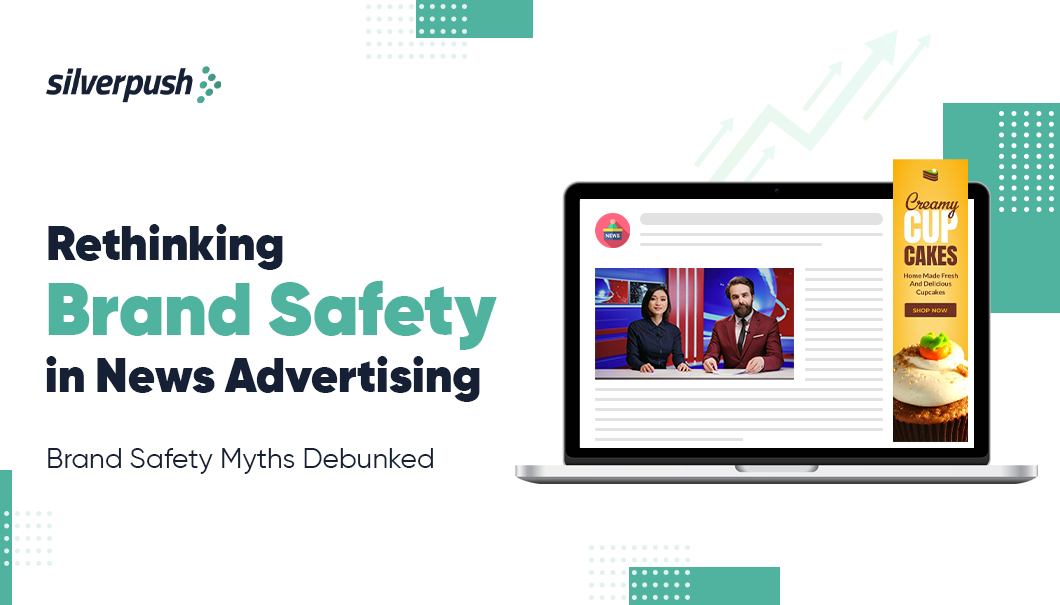
Brand safety concerns have long clouded advertising alongside news content. As a marketer and advertiser, you might think twice before placing your ads against news stories, fearing harm to the reputation of your brand.
However, new findings by Stagwell challenge those longtime fears, showing that advertising in news environments could be just as safe and effective as it is traditionally in positive settings such as sports and entertainment.
In this post, we will uncover some common myths about brand safety in news advertising and show why news content stands out for its marketing opportunities for advertisers like you.
Myth #1: News Content is Unsafe for Brands
Many marketers believe that advertising adjacent to controversial or sensitive news topics has a negative impact on their brand. The concern is that it creates a linkage in the consumer’s mindset to political turmoil, a crime report, or news of conflict with your brand.
However, such was not the case in this study from Stagwell. Ads appearing next to news content—including political news, demonstrated no decline in purchase intent or consumer favorability. In the Stagwell study, Coca-Cola ads were tested near political news, the news ads showed a purchase intent of 62%, compared to 61% for entertainment and 64% for sports news.
This suggests that brand-safe advertising is achievable regardless of content type, or at least to a certain extent. Topics tested included ‘Middle East’, ‘crime’, and ‘Trump/Biden’, highlighting the potential for news media to play a key role in brand advertising.
Myth #2: Ads Next to Negative News Harm Brand Image
There’s an irrational fear that any negative or controversial news automatically damages a brand’s reputation. Research shows that consumers are relatively comfortable seeing ads next to negative news, provided the news source is trustworthy. Trusted journalism advertising can actually enhance your brand’s perception rather than harm it.
Additionally, relying on keyword blocklists to avoid negative content often results in missed opportunities. Words like “war” or “bomb” can have benign uses in various contexts, meaning your ads are unnecessarily blocked from appearing alongside quality news content.
💡 The Untapped Potential of News Content
News content is unparalleled in audience engagement. News interests a greater audience segment than entertainment and sports combined, with highly engaged readers who actively make an effort to seek out information. High engagement leads to high purchase intent and high brand trust. According to specialists in the industry, through news environments, brands are able to reach audiences that are not just interested but deeply engaged with the content. By leveraging high-quality news content and advertising, you can reach motivated audiences and amplify your overall marketing effectiveness.
Myth #3: Technology Can’t Guarantee Brand Safety in News
Another common myth is that technology can’t ensure brand safety within news environments. The truth is that new developments in AI and contextual targeting tools have transformed brand safety content. These AI-powered solutions will make semantic data possible and curate contextual content with precision, having controlled ad placements.
Some contextual intelligence solutions like Silverpush’s Mirrors go one step ahead in contextual detection, detecting celebrity name, brand name, and activities for optimum view of all ad placements. This solution helps you bypass sensitive topics with custom inclusion and exclusion themes while appearing in relevant, high-quality news contexts and mitigating ad misalignment.
With real-time monitoring and local insights, Silverpush also amplifies brand safety while filtering unsafe content without losing reach. It comes to achieve a personalized, privacy-compliant ad experience that maximizes engagement and drives positive brand recall.
💡 Realigning Brand Values with News Advertising
The type of news content you choose to advertise alongside should be aligned with your brand values. Contextually aligned and suitable ad content adds value to your brand message and outcome. Brands like Ssense and Maybelline capture cultural trends by advertising alongside relevant news stories and resonating with consumers who value mindfulness and cultural relevance. You can drive even more positive results while maintaining always-on brand-safe advertising by tailoring campaign content to meet the particular consumer threshold and working closely with partners.
Myth #4: Keyword Blocklists are the Best Way to Ensure Brand Safety
Keyword blocklists have, for a long time, been a blunt instrument employed by advertisers wanting to avoid making their ads appear against undesirable content. This is a very outdated practice that’s often counterintuitive. For example, blocking terms like “dead” may protect ads from showing relevant content, such as an article covering a Grateful Dead concert.
Instead of blocking these terms, solutions such as Silverpush’s contextual intelligence solutions can offer smarter optimization that intelligently balances risk while using advanced filtering to avoid overblocking. These AI-driven methods ensure better control of the ad placements without losing out on the engagement, hence brand-safe, yet at the same time, maximize the ROI, reach, and effectiveness of ad campaigns.
The Future of Brand Safety in News Advertising
The future of brand safety in news advertising is being shaped by AI and advanced technology. Tools like Silverpush’s contextual intelligence solutions use AI to deliver precise ad placements by analyzing the context and sentiment of news content. Their Human Augmented Filter makes sure AI-driven insights are verified by human oversight to reduce AI errors or “hallucinations.”
Additionally, it keeps advertisers up-to-date about best practices, balancing the leading edge of technology with human vigilance. In sum, those advertisers that lead in harnessing these technological changes but with continued human vigilance are in essence opening up new avenues of reach and impact in news environments, ensuring that the ads are safe and effective.
Wrapping Things Up
News content is a powerful and safe space for brands when approached in a strategic fashion. The myths of brand safety within news advertising grow increasingly ungrounded due to developments in technology and supportive research. Those brands that reconsider their fears by leveraging quality news content advertising can experience increased engagement, trust, and purchase intent without compromising on their brand integrity.
If you want to see how Silverpush can help your brand reach relevant audiences in a brand-safe and suitable news environment, then reach out to us today and book a demo to see how AI-driven contextual intelligence helps drive better marketing effectiveness.
Safe and Sound: Building a Fortified Online Presence for Your Brand
PUBLISH DATE: 26 December 2023
In the digital age, where a brand’s reputation is built and broken online, brand safety has emerged as a critical business imperative. It goes beyond simply avoiding harmful content; it’s about strategically managing your brand’s online presence and ensuring it appears in environments that are aligned with your values, resonate with your target audience, and ultimately contribute to your overall business goals.
What is Brand Safety?
In essence, brand safety encompasses a set of measures, guidelines, and practices to ensure that a brand’s advertising does not appear in contexts that could potentially harm its image. This is especially crucial in the world of digital advertising, where programmatic placements might lead to ads appearing alongside off-brand, offensive, or controversial content.
Brand safety is a paramount concern for advertisers today, focusing on safeguarding the reputation of their brands and preventing them from associating with negative environments. The Global Alliance for Responsible Media (GARM) has developed the GARM: Brand Safety Floor + Suitability Framework to aid brands in maintaining their reputation by avoiding harmful or inappropriate content.
Critical components of brand safety include:
- Contextual Relevance: Guaranteeing that ad content is not only appropriate but also relevant to the content of the webpage, video, or other media in which it is displayed.
- Quality of Placement: Ensuring that ads are featured on websites or media outlets that align with the brand’s values and quality standards.
- Content Exclusions: Employing negative keyword lists, blocklists, or other filtering tools to prevent ads from being displayed next to specific types of content.
- Compliance and Regulation: Ensuring that ad placements adhere to industry regulations, which may vary by country, encompassing guidelines on advertising for products like tobacco, alcohol, or pharmaceuticals.
- Audience Targeting: Confirming that ads are directed at a demographic that is not only suitable but also intended for the advertised product or service.
Why Does it Matter?
Imagine your brand’s carefully crafted ad appearing next to a controversial news article or an offensive video. The resulting damage to your brand image could be significant, leading to lost sales, customer churn, and a negative public perception.
A 2021 US survey revealed that 80% of respondents expressed concern about brands appearing alongside negative content online. This statistic underscores the importance of brand safety for businesses of all sizes, regardless of industry or target audience.
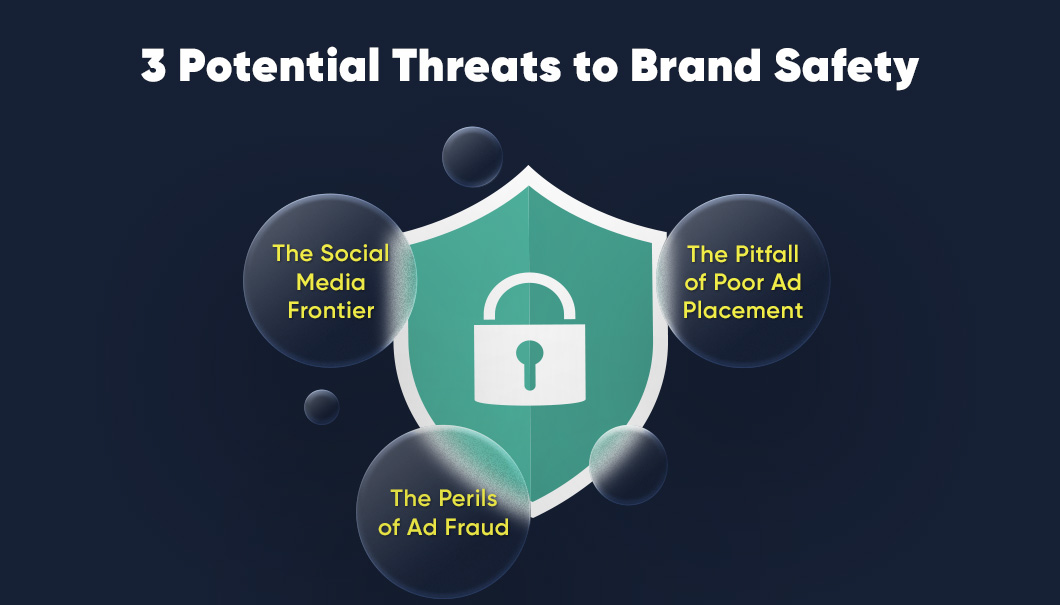
Several factors pose significant risks to brand safety in the ever-evolving digital landscape:
1. The Social Media Frontier: Over time, social media has become a globally acknowledged source of truth. A well-crafted social media presence plays a crucial role in establishing a brand’s identity. Individuals prefer staying informed and closely monitoring their favored brands on social platforms. However, the dual nature of social media poses both advantages and challenges.
While it serves as an excellent avenue for brand promotion and interaction with customers and enthusiasts, it also carries the risk of brand reputation damage if ads appear alongside objectionable content. This powerful tool’s accessibility has led to instances where internet users have criticized brands for inappropriate content, imagery, or placement next to questionable material or pages.
To ensure brand safety, meticulous attention is required in areas such as ad strategy, and monitoring mentions, comments, and appearances. Marketers must remain vigilant against impostors and identity thieves capable of causing significant harm through fraudulent activities or posting unsavory content.
2. The Perils of Ad Fraud: In an industry valued at over US$ 640 billion, fraudulent activities are inevitable. Dubious websites, often assisted by bots, generate false clicks and attract ads, leading to significant financial losses for advertisers every month. It is imperative for marketers to ascertain whether their ads genuinely reach the intended audience, exercise control over ad impressions, and measure the quality of impressions and clicks.
The impact on brand safety is notable, with adult websites being a major contributor to ad fraud. An esteemed brand’s ad appearing alongside adult content can severely damage its image. While keyword block lists are useful, they alone cannot guarantee brand safety, and the practice may have unintended consequences.
3. The Pitfall of Poor Ad Placement: Ad placements are not just about reaching a large audience; they are about ensuring your brand appears in the right context. Placing ads on websites that are inconsistent with your brand values or target audience can lead to negative associations and erode your brand image.
A common mistake among marketers and advertisers is the oversight of ad placement strategy. Reports have criticized YouTube for displaying ads from renowned brands alongside misinformation and conspiratorial content. Emphasizing the importance of ad placements is crucial, as they significantly impact a brand’s image.
Striking the Perfect Balance of Brand Safety with Contextual
Contextual targeting offers a powerful solution to the challenges of brand safety. This innovative technology utilizes artificial intelligence, including Natural Language Processing (NLP) and Sentiment Analysis, to understand the context of web pages and online environments. By analyzing the written and visual content, contextual targeting enables brands to place their ads on relevant websites with content that aligns with their brand values and resonates with their target audience.
Mirrors by Silverpush: Your Trusted Partner in Brand Safety

Mirrors by Silverpush is a cutting-edge contextual targeting platform designed to help brands achieve their goals while maintaining the highest levels of brand safety. Utilizing sophisticated AI algorithms and advanced language models, Mirrors analyzes the written and visual content of web pages, ensuring that your ads appear in safe and brand-aligned environments. With Mirrors, you can:
- Protect your brand reputation through intelligent ad placement.
- Reach your target audience with precision and relevance.
- Gain valuable insights into your audience’s behavior and preferences.
- Optimize your campaigns for maximum effectiveness and return on investment.
In conclusion, brand safety is no longer a luxury; it’s a necessity for businesses operating in the digital world. Innovative solutions like contextual targeting and partnering with trusted solutions like Mirrors, brands can ensure their reputation is safeguarded, their advertising efforts are effective, and their overall business objectives are achieved.
Brand Safety’s Secret Role in Brand Suitability
PUBLISH DATE: 21 September 2023
With the rise of online advertising and social media, brands can reach consumers in unimaginable ways. However, with great opportunity comes great responsibility, especially when we are talking about brand suitability.
In this digital age where the internet is filled with tons of information, ensuring your brand is seen in a safe and appropriate context is paramount. Keep reading to understand the basics of brand safety and suitability and explore why brand suitability begins with brand safety and why it should be a top priority for every business.
What is Brand Safety?
Brand Safety refers to the practice of safeguarding a brand’s image by preventing it from appearing alongside content that could be damaging or inappropriate. This includes avoiding associations with topics such as hate speech, terrorism, illegal activities, piracy, obscenity, and content related to death or injury. For instance, a brand wouldn’t want its ads to be displayed next to breaking news about a conflict or crisis. Traditionally, brand safety has employed methods like keyword banning and URL blocklisting to avoid unwanted connections between the brand and harmful content.
What is Brand Suitability?
Brand Suitability, on the other hand, takes brand safety a step further. It goes beyond simply avoiding harmful content and focuses on understanding the deeper meaning and context of the content surrounding the brand’s advertisements.
For example, a publisher in the banking industry whose ad inventory is ideal for banks. If reports of financial wrongdoing emerge in the news, banks may want to avoid placing ads within those specific articles. However, completely blacklisting the entire website may harm the advertiser’s efforts. This is where brand suitability comes into play, allowing advertisers to filter out specific articles or content that may be considered “risky” while still benefiting from advertising on the rest of the site.
In short, brand safety is about avoiding content that is obviously harmful, while brand suitability involves a more nuanced approach, taking into account the context and meaning of content to ensure a brand’s advertising aligns with its values and objectives. Both practices are essential for maintaining a positive brand image in the ever-evolving digital advertising landscape.
How Brand Suitability Begins With Brand Safety?
Historically, brand safety has centred on the marketer’s need to prevent ads from appearing next to content deemed inappropriate for the target audience. These tactics now seem outdated and inflexible, lacking the level of control needed to build and maintain successful online businesses.
Currently, the major challenge for brand safety is the consideration of context and audience, both of which are essential for determining brand suitability which require more nuance.
Brand suitability is critical for the success of any advertising campaign since it focuses on the context of advertising and its influence on the brand. Furthermore, brand appropriateness may aid in determining which regions appeal to the intended demographic.
As a result, it might be viewed as the next evolutionary step in brand safety. While brand safety is mainly concerned with preventing or deleting the most harmful and destructive information, brand appropriateness is the act of minimising the possibility of a brand appearing in an improper setting so that companies’ reputations may be maintained. However, by tweaking the message, some firms are changing and employing historically dangerous pages for advertising.
Brand Suitability and Safety in a World of Constant Change
As consumers become more sophisticated, marketers and brands must adapt and adopt brand safety and suitability best practices.
In line with the media targeting strategy, brand safety should be flexible and evolve over time to assess emerging events and news cycles independently and determine which content is acceptable or inappropriate for a brand so that ads appear only on websites and apps that will benefit.
As a result, brand safety technologies that enable you to regulate and include or omit ad placements are critical for keeping a positive and suitable brand image.
Unfortunately, certain brand safety products are designed to be one-size-fits-all. It is tough to identify whether the ad is acceptable since not enough attention is paid to a brand’s distinctiveness or the context of words or visuals that appear in an ad.
Conclusion
By prioritizing brand safety and suitability, brands can protect their reputation, reach the right audience, and maximize the impact of their advertising efforts. In today’s competitive digital landscape, ensuring brand suitability is not just a choice; it’s a necessity for long-term success.
Navigating Path with Contextual Advertising in a Programmatic Advertising Landscape
PUBLISH DATE: 29 August 2023
In the rapidly changing landscape, a seismic shift is underway. We are living in times when automation has taken center stage in all sectors, especially advertising.
Gone are the days of laborious manual toil for advertisers and publishers alike. Enter programmatic advertising, the game-changer that harnesses data and technology to plan the perfect sync of ads, reaching their intended audience at the precise moment.
The prediction of global programmatic ad spending is to reach 725 billion by 2026. The United States remains the leading programmatic advertising market worldwide. However, advertisers often encounter, two major challenges with programmatic ads:
- Lack of transparency
- Ineffective targeting
The programmatic advertising environment is intricate and opaque, making it challenging for advertisers to comprehend how the advertisements are deployed. As a result, advertisers waste money on ads and overpay. Programmatic advertising falls short of engaging the target audience since it heavily relies on data.
Also Read: What is Programmatic Advertising?
Navigating Path for Advertisers to Overcome Obstacles
Along with these challenges, there is another elephant in the room, the demise of third-party cookies.
With the third-party cookies phase-out, tracking user data will be difficult as they will not have a unique identifier that can be used to track users across multiple websites.
In this evolving landscape, advertisers find themselves at a crossroads.
- They are in desperate need of a solution that offers them a way to overcome the programmatic ad challenges.
- A solution that targets ads without interfering with the user’s privacy.
As a solution, contextual advertising is a ray of hope.
Contextual Advertising as a Solution: How?
In the dynamic realm of advertising, contextual advertising isn’t a newcomer. This methodology which aligns ads with the surrounding content, lost its spotlight as advertisers pivoted towards behavioral targeting, a strategy yielding superior outcomes by delivering personalized ads.
Yet, the relentless pursuit of personalization led to an overindulgence, raising concerns among users about data misuse and their digital safety.
The privacy concerns of users led to the introduction of strict guidelines by GDPR and CCPA along with major browsers banning the use of third-party cookies.
These changes have made advertisers retrace their steps to an older path of advertising– Contextual Advertising.
Contextual display advertising focuses on aligning the ad with the content of the web page rather than emphasizing the user’s data.
The AI-powered system identifies key contexts of the web page’s content and serves the most relevant advertisement based on contextual cues.
For example, a user engrossed in an article about car maintenance encounters an ad spotlighting the latest automobile release by a prominent brand. Here, the connection is made not through personal data but through content relevance.
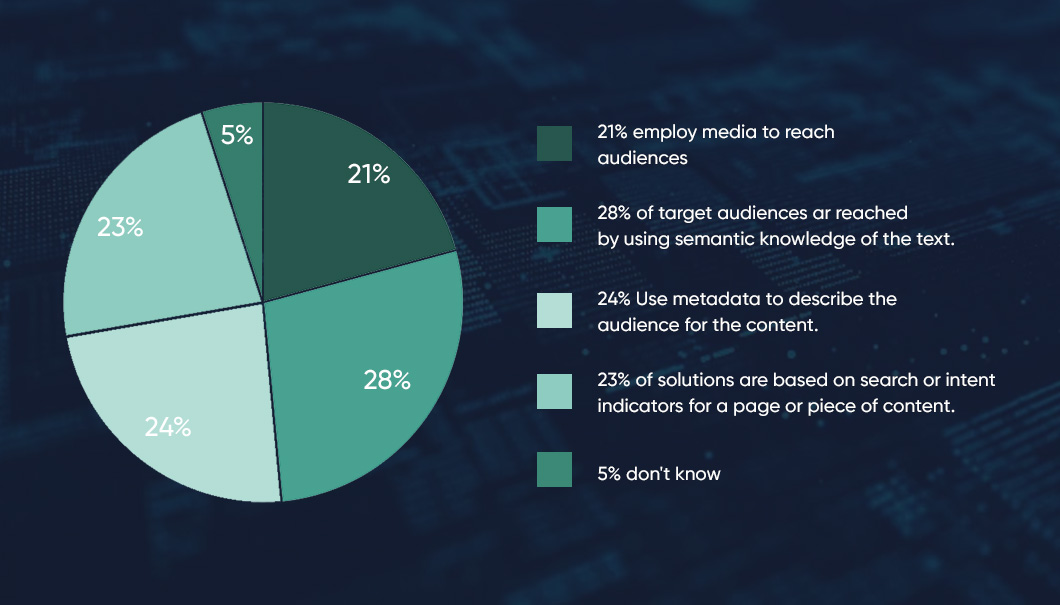
Contextual targeting 2.0: Why is it better this time around?
As the world moves forward, contextual advertising is pacing up with it! The recent advancements in algorithms have helped advertisers to perform hyper-contextual targeting.
Natural language processing (NLP) is used to analyze the text content of web pages in order to help advertisers understand the context of the content.
Machine learning is used to develop algorithms that can predict the likelihood of a user clicking on an ad. This can enhance the ROIs and ensure advertisers that they are only paying for ads that are likely to be clicked on.
Hyper-contextual targeting is still in its early stages, but it has the potential to revolutionize the way that advertising is targeted. As AI and ML continue to develop, hyper-contextual targeting is likely to become even more accurate and effective, leading to better results for advertisers and publishers alike.
Get Started with Contextual Advertising Today!
AdTech organizations are taking full leverage of this evolving time! Silverpush, a leading ad tech organization, has introduced Mirrors, an AI solution for programmatic contextual advertising.
Mirrors comprehensively identify key contexts across webpages, including text, images, and videos. Utilizing Natural Language Processing (NLP), it identifies keywords and categorizes content. Additionally, AI-powered technology employs video analysis for image recognition, effectively identifying celebritiy name, brand name, and various activities within images.
Furthermore, Mirrors employs semantic analysis on the content of a webpage. This enables the extraction of significant information, including emotions and instances of sarcastic expression. This extracted information contributes to the deployment of relevant advertisements.
Still not convinced? We have more!
Unlocking Advantages
1. Abides by strict privacy guidelines: According to a study, 72% of Americans are concerned about their privacy.
Contextual advertising abides by the privacy guidelines set by GDPR, COPPA, and CCPA as it doesn’t rely on cookies rather it depends on the content the user is consuming.
2. Drives high Return on Investment and Return on Ad Spend: Contextual programmatic advertising leverages the already generated interest of the user. Since the user is already intrigued by the topic, the chances of the user clicking on relevant ads increase significantly.
3. Relevant to the user: The audience demands relevancy, when tailored ads are shown to the user they feel more comfortable. According to a study, 79% of UK consumers are comfortable seeing contextual ads.
4. Brand safe: While focusing on user privacy advertisers also need to focus on their brand’s safety as well. Brands’ reputations must not be compromised at any cost. Wrong ad placements have often led to a damaged reputation and revenue loss. Since ads are placed based on relevancy, brands can ensure that their ads are placed in brand-safe and suitable environments.
Final Thoughts
Contextual programmatic advertising becomes a sustainable choice for the advertising landscape. As tracking methods like cookies are fading away and brands and advertisers are emphasizing privacy-focused targeting approaches.
Combining contextual programmatic targeting with artificial intelligence and machine learning can provide advertisers with valuable information for effective targeting. This approach offers a wide range of insights to help advertisers reach the right audience and fit seamlessly in the evolving landscape.
Don’t Let Keyword Overblocking Kill Your Reach: Here’s What to Do
PUBLISH DATE: 11 August 2023
For advertisers, protecting their brand from inappropriate content is of utmost priority. When advertisements appear alongside harmful content, it has the potential to significantly damage the brand’s reputation. According to data, 54% of consumers hold a negative perception of brands that associate themselves with morally conflicting content.
This, in turn, can have a substantial impact on their advertising revenue, leading to decreased click-through rates (CTRs) for ad campaigns.
But, protecting your brand image does not equal being too restrictive with keywords or blocking keywords excessively as this can negatively impact your reach and represent a hugely wasted opportunity for both sides of the advertising ecosystem.
If your brand struggles to reach more people due to blocking too many keywords in the past, this blog is here to help. Keep reading to learn how you can avoid overblocking keywords and improve your reach.
How Keyword Overblocking is Killing Reach and Monetization Opportunities
Many advertisers employ brand safety measures to ensure their ads are not displayed alongside inappropriate content. A common example is a children’s brand ensuring their ads don’t appear next to adult-oriented material.
Another layer of protection often used by advertisers and agencies is keyword blocking. This allows them to prevent ads from being shown alongside content containing specific words. For instance, a family-friendly brand might block the keyword “porn.”
However, excessive keyword blocking can lead to a problem called overblocking. This can diminish the reach of your online ads and cause your ads to miss out on relevant searches.
Several reasons highlight why overblocking can harm your ad campaign’s effectiveness:
1. Missed Relevant Searches: Overblocking can prevent your ads from showing up for searches closely related to your target keywords. For example, if you block “free shipping,” your ads might not appear for searches like “buy shoes with free shipping.”
2. Reduced Relevance: Overblocked ads may appear for irrelevant searches, making them less appealing to the audience. This can lead to fewer clicks.
Finding the right approach to keyword blocklists doesn’t have a one-size-fits-all solution. While some keywords (e.g., “terrorist”) are clearly necessary to block, an excessive list can overly restrict your digital advertising. This can lead to less effective spending and disappointing results.
Here’s How to Make Your Advertising More Inclusive

Of course, it’s important to focus our attention on brand safety. But as an industry, we need to think of new ways to implement brand safety without excluding creators based on their sexual orientation, race, or ethnicity.
The keyword blocklists that were relevant in the past might not be as effective today. Even though they needn’t be removed completely, you must regularly update them to avoid mistakenly classifying suitable content as harmful.
Ensure inclusion by amplifying preferred creators’ voices and carefully monitoring brand safety partnerships.
This final point is one we don’t see considered often enough. Working with a third-party brand safety and brand suitability partner can help with your brand safety measures.

Leverage the power of Silverpush, a leader in AI-driven contextual targeting, and its cutting-edge solution, Mirrors.
It offers custom targeting and exclusion themes to accurately identify unsafe content across a comprehensive set of brand safety categories. It ensures that only the unsafe video or page is blocked and not the entire channel or website to
Avoid over-blocking or killing reach.
This is done across multiple platforms, such as YouTube, Openweb, and Meta, using natural language processing (NLP) and semantic analysis.
Moreover, Mirrors’ Multicultural targeting approach ensures avoiding stereotypical assumptions and targets diverse audiences through inclusive and personalized ads that respect individual preferences.
It does not end here, Mirrors offers a multitude of capabilities, to know how Mirrors can effectively solve the overblocking problem and ensure your reach is uncompromised, fill out the form on your right and an expert from our team will contact you soon.
Last Words
In the advertising industry, it’s essential to embrace changes to brand safety measures to ensure that we are not excluding words, phrases or languages that could exclude minority groups. It’s time to move forward with your approaches to brand safety. When we do, we’ll be creating an online world that promotes positivity and inclusivity.
How to Create Relevant Contextual Ads with Mirrors Generative AI
PUBLISH DATE: 15 June 2023
Let’s face the truth: THIRD-PARTY COOKIES ARE LONG GONE!
Advertisers need to drastically shift from conventional targeting methods (requiring audience data) to privacy-focused strategies without compromising on delivering relevant ads.
Traditional targeting methods relied on cookies to reach targeted audiences by building a detailed profile of their online activity.
Growing data privacy concerns and the implementation of regulations like CCPA and GDPR raise the dilemma – how to balance between delivering personalized and relevant ads while respecting user privacy?
Enters Mirrors Generative AI, the next-gen contextual planning tool capable of discovering audiences without cookies and reaching them precisely in contextually relevant moments. The highly advanced tool was recently launched by Silverpush at its Cannes Lions 2023 debut.
Amplifying Relevance and Reach with Generative AI-Powered Contextual Advertising
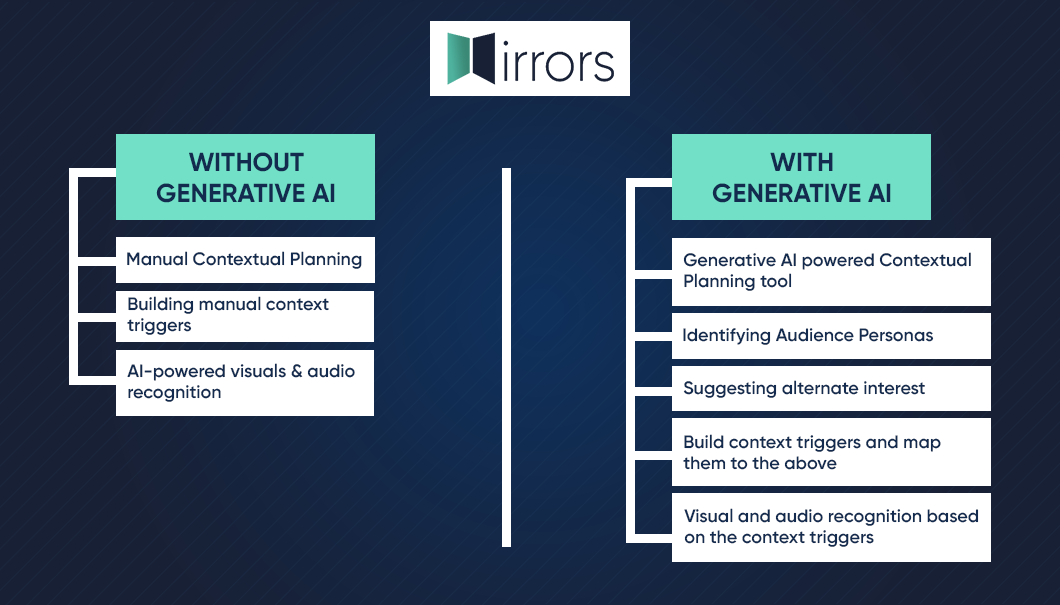
Mirrors, the flagship product of Silverpush, has recently integrated Generative AI into its contextual advertising technology to help brands reconnect with their untapped audiences.
It is a revolution that will boost the ever-present contextual intelligence by discovering newer audience personas without any human bias, guesswork, or stereotypes of the past.
By leveraging its predictive AI technology, Mirrors goes beyond the basics and delves deep into the content consumption habits of the target audience.
Utilizing advanced generative AI technology, Mirrors carefully analyzes videos and identifies key contexts in webpages, surveys, and a wide range of content on the open web, examining each word with precision.
This enables Mirrors to uncover patterns, decipher meaning, and extract valuable insights that surpass surface-level understanding.
Challenges Faced by Advertisers in Finding Contexts Manually
To maximize engagement, advertisers aim to target diverse audience personas based on their specific interests, timing, and context. However, relying on manual context-building methods has certain limitations.
1. Scale and Complexity: Manually creating context triggers for a large volume of content can be a time-consuming and complex task. Advertisers may struggle to keep up with the constantly evolving content landscape and the need to identify and update relevant triggers across various platforms and channels.
2. Subjectivity and Bias: Manual context trigger creation involves human judgment, which can introduce subjectivity and bias. Advertisers may have different interpretations of content, resulting in inconsistent or inaccurate context triggers that may not align with the intended audience or message.
3. Limited Contextual Understanding: Fully comprehending the context of every piece of content manually can be challenging. Advertisers may miss subtle nuances, references, or trends that could impact the appropriateness of ad placement.
4. Resource Intensity: Creating and managing manual context triggers requires dedicated resources, including skilled personnel, time, and effort. Advertisers may face limitations in terms of available resources, hindering their ability to effectively build and maintain comprehensive sets of context triggers.
5. Timeliness and Real-time Updates: Content evolves rapidly, and new trends and topics emerge regularly. Advertisers may struggle to keep their manual context triggers up to date, leading to potential misalignment between ads and current content relevance.
6. Scalability and Adaptability: As advertising campaigns scale and expand across different platforms and channels, managing manual context triggers becomes more challenging. Advertisers may find it difficult to adapt their triggers to new formats, channels, or emerging content types.
Eliminating Human Bias and Automating Context Discovery
The real power of Mirrors Generative AI lies in its ability to seamlessly integrate AI as a co-pilot to human intelligence. The advanced technology builds a comprehensive context list, well aligned with the audience’s personas and their direct and alternate interests. This enables advertisers to reach untapped/overlooked yet relevant audiences, resulting in enhancing incremental reach.
Why Plan Your Next Campaign With Mirrors Generative AI?
1. Cookieless Audience Discovery: The contextual planning tool will enable advertisers to identify contextually relevant audiences without relying on third-party cookies.
2. Scale without Compromise: Better contextual relevance leads to improved audience understanding, which can often be overlooked. By tapping into these overlooked audiences, advertisers can enhance their reach and engagement.
3. Understand Multicultural Audience: Mirrors Generative AI uses diverse datasets to assess performance across races and cultures. Then, analyzing metrics and understanding the emotional impact, bias, inclusion, and purchasing intent. This generates audience personas and passion points, offering advertisers valuable insights for informed decision-making.
4. Create Highly Customized Campaigns: Utilizing Mirrors Generative AI offers the opportunity to go beyond pre-defined taxonomies and gain unparalleled flexibility in creating highly customized campaigns.
Ready to Experience 3X Audience Expansion with Mirrors Generative AI?
It’s your time to broaden your audience reach with Mirrors Generative. To know how our advanced tool can boost your ROI fill and widen your reach with precision out the form on the right.
Finding Balance: Contextual Advertising and User Privacy in Open Web
PUBLISH DATE: 07 June 2023
Advertising is a crucial element for any brand as it drives its revenue by pursuing customers from the beginning of the funnel, that is, brand awareness to conversion. Along with customer acquisition, it also generates strong brand awareness and builds a brand image.
The advertising landscape today is facing the issue of users’ online privacy which has become an alarming concern for brands. It is moving towards privacy-first advertising.
“66% of consumers have expressed discomfort with businesses and brands tracking their browsing history to deliver personalized ads.”
This statistic highlights a growing unease among internet users regarding the use of their data for targeted advertising purposes. As a result, businesses and advertisers are increasingly seeking alternative strategies that respect user privacy while still delivering relevant and engaging advertisements. In this context, finding a balance between personalized advertising and privacy has become crucial for brands to maintain consumer trust and loyalty.
Mirrors is a contextual advertising solution for the open web by Silverpush which is helping brands tap into the audience while abiding by the privacy guidelines set by General Data Protection Regulation (GDPR) and California Consumer Privacy Act (CCPA).
How can Mirrors be a Game Changer in a Privacy-First Environment?
More and more internet users worldwide are expressing increased concern about their online privacy, with 67% of the population is stating that they are more concerned than ever. A study found that 81% of people prefer to see ads that are relevant to their browsing experience, and 65% of consumers have a more positive opinion of brands that offer contextually relevant ads.
And, with this, brands need to be more concerned about their advertising strategies to navigate this shift in consumer mindset.
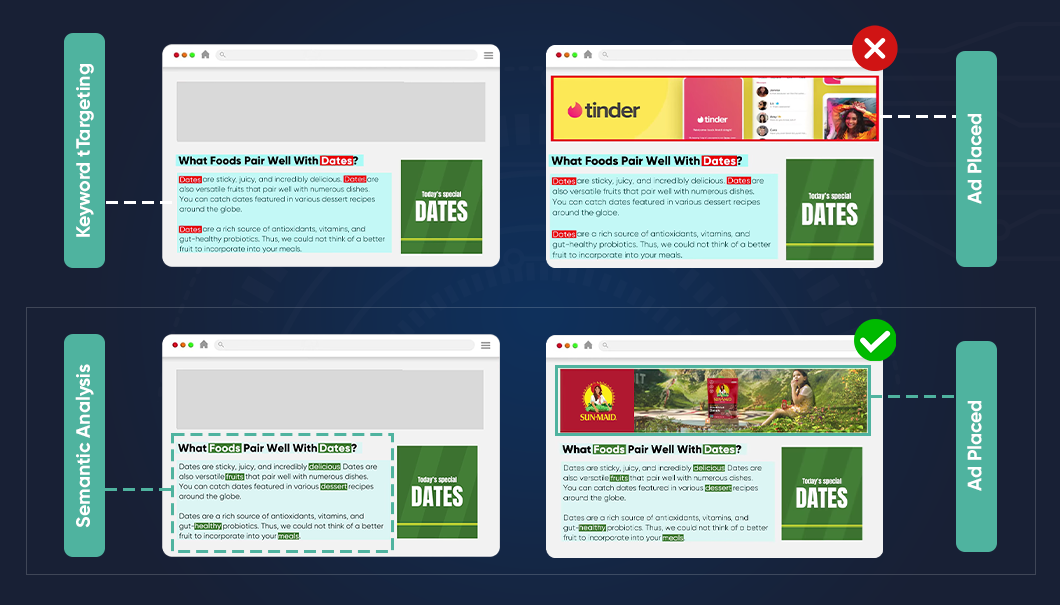
To address these concerns and preferences, contextual advertising has emerged as an effective solution. The AI-powered technology analyzes the content of the webpage and deploys the most relevant ad based on contextual triggers. These triggers include identifying key contexts of the entire content. With this approach, advertisers ensure that the user is targeted with the most relevant ad.
Contextual ad targeting also benefits advertisers by providing a higher number of relevant ads to consumers. Since the ads are displayed based on the content of the page, they are more likely to align with users’ interests and increase engagement.
For example, if a user is looking for the latest laptop, the AI will target the user with the most relevant ad that will be related to the content of the webpage.
Another benefit is that, unlike other targeting methods, contextual advertising doesn’t rely on collecting or storing personal data about users, alleviating privacy concerns. This form of targeting offers a privacy-friendly approach that aligns with users’ increasing concerns about data usage. It delivers relevant ads based on webpage content, enhancing user experience and generating more positive perceptions of brands.
But why has contextual advertising been a widely accepted approach?
Contextual advertising has been a widely accepted approach because in the changing landscape of advertising it aligns the best with the requirements of users and advertisers.
Today, users expect privacy assurance more than a personalized ad experience. They want their identity and information to be safe as they browse the web.
Keeping the rising concerns in mind, major browsers like Firefox, Safari (Apple), and Opera banned third-party cookies from use and Google Chrome began working on the alternative.
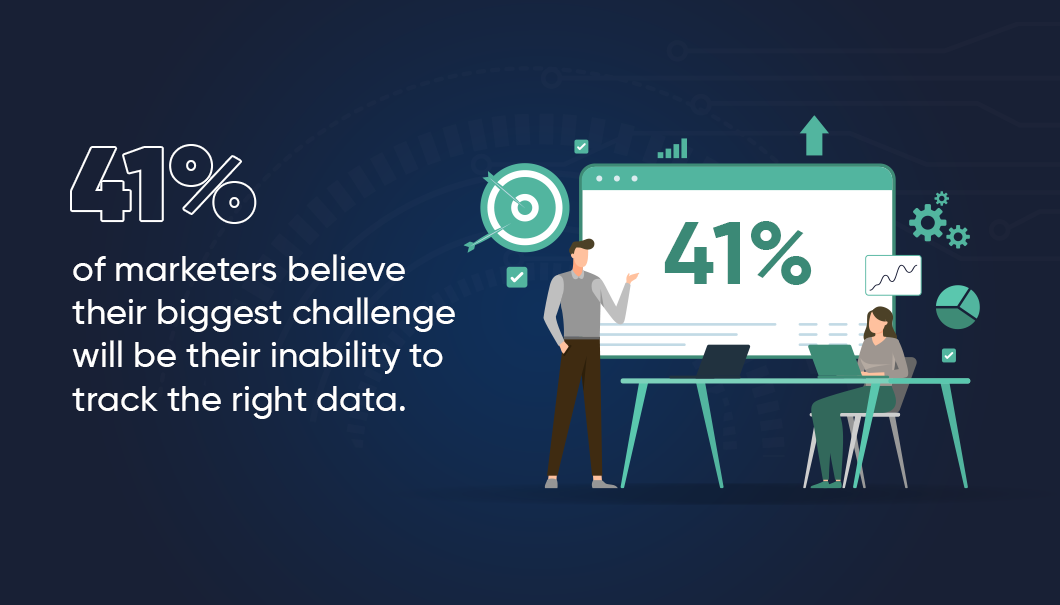
Third-party cookies have historically played a significant role in behavioral targeting. Here’s an overview of their role:
1. Collecting User Data: Third-party cookies are small text files that are stored on a user’s browser by a website other than the one they are currently visiting. These cookies allow third-party advertising networks or tracking companies to collect data about a user’s browsing behavior, such as the websites they visit, the pages they view, and the products they are interested in. This data is crucial for behavioral targeting.
2. Profiling and Segmentation: With the help of third-party cookies, advertisers were able to create user profiles and segment audiences based on their browsing habits and interests. By tracking users across multiple websites, third-party cookies gathered a wealth of information that helped advertisers understand individual preferences and tailor their advertising messages accordingly.
3. Personalized Advertisements: Advertisers use the information provided by the third party to serve relevant ads based on a user’s browsing history and interests.
4. Retargeting: Third-party cookies enable retargeting, where ads are shown to users who have previously interacted with a brand or visited a specific website, thereby increasing the chances of conversion.
5. Measurement and Analytics: Advertisers could monitor click-through rates, conversions, and other key performance indicators by leveraging the data stored in these cookies. This information helps advertisers optimize their campaigns, refine their targeting strategies, and make data-driven decisions.
These factors increased concerns about privacy among users which lead to drastic changes in the advertising. Hence, contextual targeting has become a useful alternative to survive in this dynamic advertising landscape.
Conclusion
The advertising landscape will continue to evolve, advertisers must find a solution that caters to the privacy concerns of the user without diverting from personalized messaging. Advertisers are rapidly inclining towards the contextual targeting approach. This is because it is the only and best available option to gain a competitive edge. This approach not only ensures safety but also drives better results and Return on Ad Spend (ROAS).
FMCG Industry Advertising Future: Capitalise the Power of Relevancy
PUBLISH DATE: 26 May 2023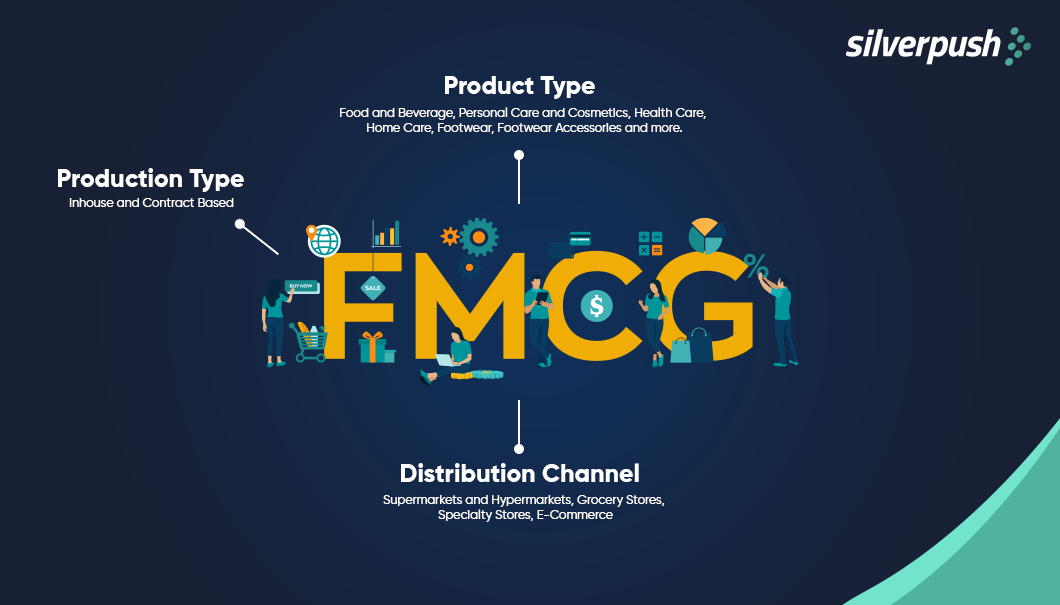
The FMCG industry is a vital component of the global economy, contributing significantly to a country’s Gross Domestic Product (GDP) and job creation. As a major driver of consumer spending, FMCG plays an essential role in various aspects of the economy.
The FMCG market size was evaluated to be 716.3 Billion in 2022 and the CAGR growth rate is expected to be 4.41% from 2023 to 2028.
The market size of the FMCG industry has significantly grown in the U.S., China, and other developed markets. Keeping the growth in mind, the experts are predicting 70% growth on a global scale. The World Bank predicts that in terms of consumer market the FMCG market in India will take the third place surpassing Japan and Germany by 2030.
The consumer industry is a highly competitive landscape, with brands vying for market share based on product type, production techniques, and distribution channels. However, in this fiercely contested arena, advertising is the key to success for them. But the advertisers are facing a set of challenges in the advertising landscape.
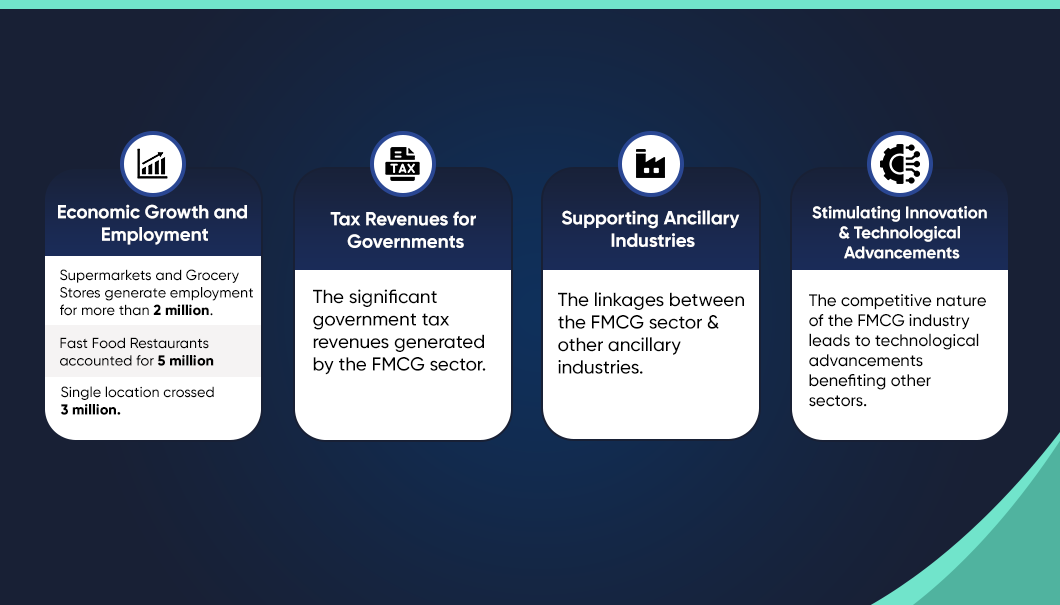
What are the Advertising Challenges Faced by the FMCG Industry?
According to a study, till 2023, FMCG firms were expected to raise their digital advertising spending by 7% yearly. FMCG expenditure decreased by 10.7% to $ 26.7 billion in 2020, a more significant decrease than the whole advertising industry.
But utilizing the ad spend is a bigger and more important factor. Since the FMCG industry is flooded with brands and products, getting brand visibility and brand recognition are the two main purposes of advertising for them. To achieve both goals choosing an appropriate advertising approach is crucial. But due to a shift in consumer behavior creating a positive and solid brand image has become difficult.
The consumer has become more empowered and they want to control everything they see, especially in the virtual space. They want to see the ads of their interest but without getting digitally stalked. 72% of people believe that virtually all of what they do online is being monitored by advertising, technology corporations, or other businesses, and 81% believe that the threats can surpass the possible rewards of data collecting.
Not only the audience but the traditional advertising ways have often led brands to face consequences of negative branding due to wrong ad placement. This not only damaged their reputation but also resulted in ad wastage.
The Rise of Contextual Advertising
Have you ever noticed that whenever you walk into a supermarket to get one item from the shelf you end up filling the cart? This is because at that moment you were interested in the items, they were relevant and you were triggered to buy them.
Contextual advertising is similar!
Through contextual targeting, advertisers reach the target audience at the right moment which triggers them to engage with the brand. According to a study, 79% of respondents agreed that they were comfortable with the ads that are relevant to them. Also, 65% said they would be more tempted to buy from relevant ads.
How can the FMCG Industry Benefit from Contextual Ads?
One approach to take advantage of the opportunity is through omnichannel contextual advertising. Silverpush’s remarkable AI-powered solution, Mirrors, ensures brand safety and suitability across various advertising channels. The high-powered AI technology ensures the message reaches the right audience.
1. YouTube
For the FMCG industry, video advertising is the most suitable ad format. YouTube offers various ad formats and advertisers can choose the most suitable format for them. According to a study, 88% of video marketers were satisfied with the ROI of their video marketing on social media.
In the past, an FMCG brand chose 1 video creative to connect and interact with the target audience. The campaign has delivered more than 9 million impressions in 28 days.
Post-campaign analysis the brand concluded that they had reached more than 5 million unique users. The campaign performed beyond the industry benchmarks as it surpassed the planned KPIs (VTR).
2. Open Web
Relevant advertising can be shown depending on the webpage content that the target audience has viewed. The mirror captures the audience’s attention, without invading the user’s privacy. This gives users a sense of safety and the advanced AI-powered technology ensures that the ad is placed in a brand-safe environment.
3. Meta
To extract contextual signals that enable the distribution of real-time, in-the-moment advertising for outstanding results, Mirrors carefully selects and examines brand-safe Facebook pages. Models for Artificial Intelligence (AI), Machine Learning (ML), and Natural Language Processing (NLP) are used to do this.
4. CTV
On most streaming TV services, CTV represents over 80% of all viewing. The remaining 20% is accounted for the other devices connected to the internet (laptops, smartphones, and tablets).
As per studies, ad spending on linear and connected TV (CTV) combined will increase from $87.24 billion to more than $100 billion in 2026. This will be due to the surge in CTV viewing.
When marketers purchase advertising space on CTV, their commercials are played to viewers when they stream movies, TV series, and other content to their linked television. To ensure brand safety, ads are delivered in the proper context with the help of semantic analysis, content analysis, and customized ad segments.
Takeaways
The advertising arena is changing rapidly and for the FMCG industry, it is their primary source of establishing brand recall. Contextual advertising can be a game-changer for them as it will help them in capitalizing on the interest of the user. It will help drive engagement without intervening with the privacy of the user. Also, omnichannel advertising can play a significant role in strengthening brand recognition.
Play Safely: Strategies for Brand Safety in In-Game Advertising
PUBLISH DATE: 30 April 2023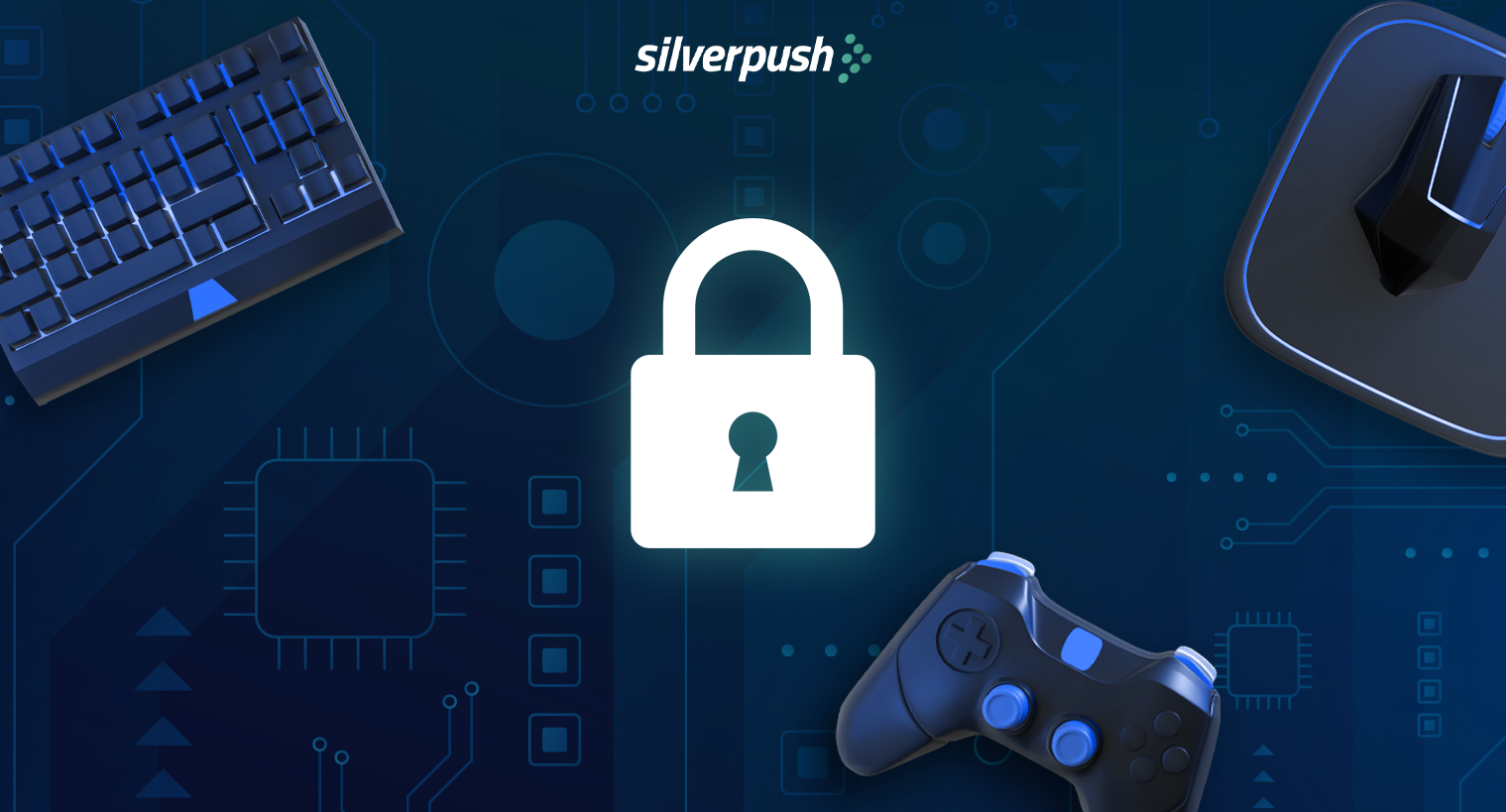
Video games have always engaged a large audience, especially GenZ, and millennials. This gives advertisers and brands an opportunity to innovatively establish a solid brand recall.
As gaming devices continue to gain popularity and offer more opportunities for brands to reach their audience, the global gaming market is predicted to grow at a CAGR of 9.9% from 229.39 billion in 2022 to 252.10 billion in 2023. Additionally, it’s projected to reach 401.32 billion by 2027 at a CAGR of 12.3%.
The gaming industry is in an evolving phase and advertisers must explore this in-video game advertising. The primary reasons are:
- The gaming industry has a huge audience base who play games on different devices. This means brands have more than one opportunity to reach their targeted audience.
- With a large audience reach, the gaming industry has a loyal fan base. According to a study, in-gaming advertisements had influenced 44% of gamers to engage with brands.
However, this pool of advertising opportunities will require brands to focus more on brand safety.
What are the Key Components of Brand Safety for In-Video Gaming Advertising?
Measures taken to protect the brand image are known as brand safety. This is done to protect brands from irreparable damage as we had a few examples in the past of how the brand’s reputation was damaged beyond repair due to ad placement next to inappropriate content.
Interactive Advertising Bureau (IAB) has shared an impactful framework for advertisers which can help them in ensuring brand safety.
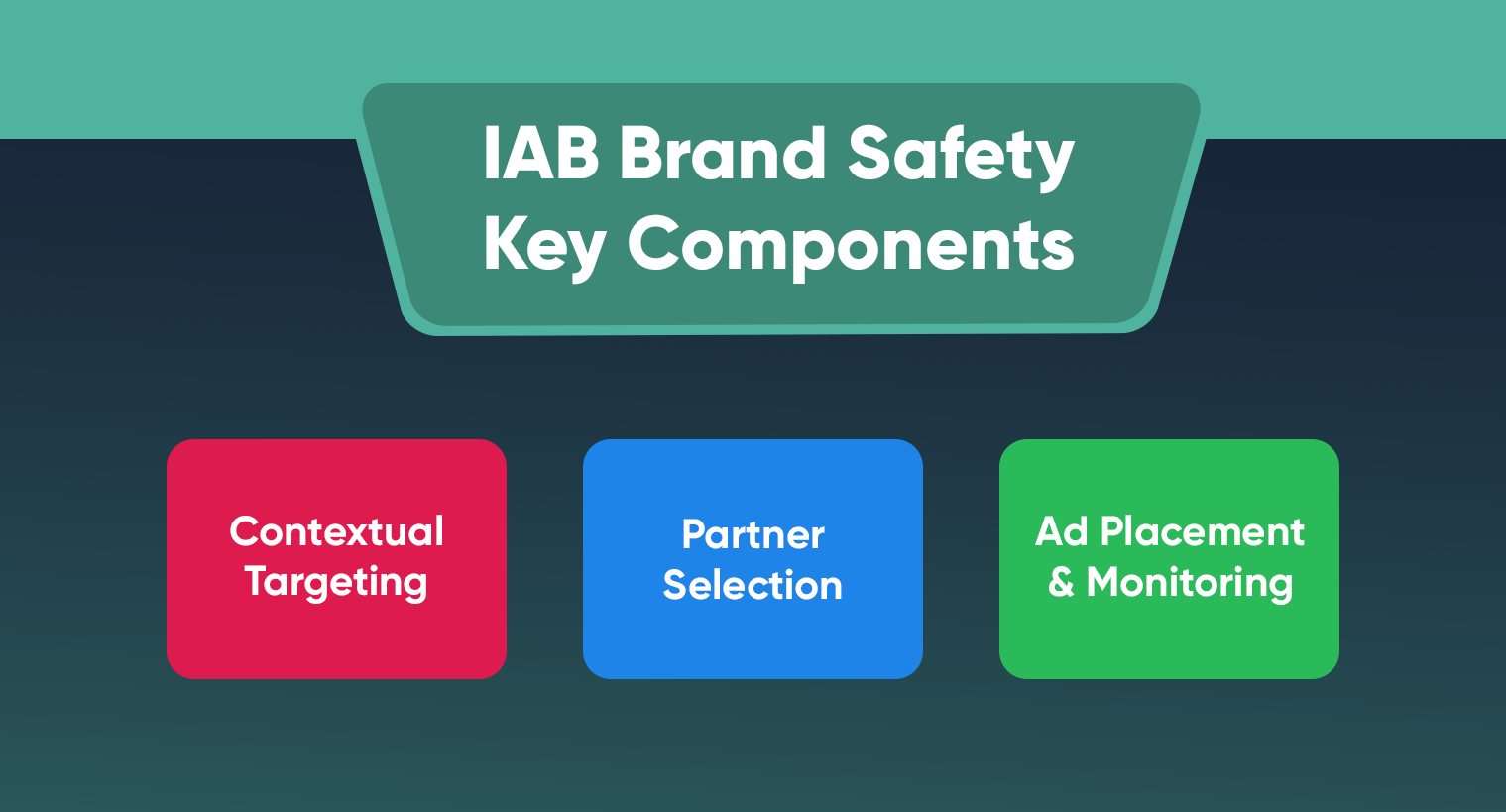
1. Contextual Targeting:
The process to phase out third-party cookies was started years ago. This was done to abide by the privacy of the user. Amidst the evolving landscape of advertising, advertisers began to rely on contextual targeting which resulted in higher brand engagement. In-video gaming advertising, advertisers must rely on contextual advertising to be profitable as the AI-powered technology ensures that the ads appear to the relevant content. A customized blocklist is prepared but unlike keyword-based targeting, the AI understands the context of the keywords used like a human mind. This increases the advertising opportunity, brand safety, and audience engagement with the brand.
2. Partner Selection:
Brands look for partners who would help them in setting up the ads in the video games. But before finalizing the partners, brands must evaluate them based on their game quality, advertising ecosystem, and compliance with General Data Protection Regulation(GDPR) and Children’s Online Privacy Protection Act (COPPA) regulations. It’s also essential to review the game’s content for any violent or inappropriate content that doesn’t align with the brand’s values. Advertisers should request a comprehensive explanation of the partner’s brand safety policies and a block list of prohibited advertisers or services.
To enhance your brand safety, you perform the following steps to ensure multi-level verification. Use a combination of the following verification tools:
- Viewability – This will help you get the percentage of ads seen by your audience. This tool ensures that your ad is seen by the target audience.
- Fraud detection-This tool will help you in identifying and preventing fraud. It will detect invalid traffic, bots, and any fraudulent activity which has the ability to impact your campaigns.
- Brand Safety Protection- This tool will add an additional layer of protection for contextual targeting. The tool will ensure that your ads aren’t displayed against inappropriate content.
- Audience Verification- This tool will give you insights into the audience who have seen your ad.
3. Ad Placement and Monitoring:
A key component of brand safety in video game advertising is ad placement. To prevent any unfavorable connotations with the brand, advertisers should make sure that their adverts are positioned in the proper areas inside the gaming environment.
For instance, advertisements for gambling or alcohol shouldn’t be included in kid-targeted games since they might expose kids to unsuitable content and harm the reputation of the company.
In a similar vein, advertisements for graphic or explicit content need to be kept out of games targeted only at adults. To make sure that their advertising is neither obtrusive nor disruptive, advertisers should also take the context of the gaming environment and the entire user experience into account.
Apart from the placement advertisers should keep a close eye on their campaigns to ensure they are not running in inappropriate places. Utilizing technology solutions and collaborating with partners to resolve any problems that may occur be part of this. For instance, advertisers may check ad placement and look for any possible brand safety issues using third-party technologies. They may also closely collaborate with their partners to resolve any problems and make any necessary modifications. In order to track success and pinpoint any areas for improvement, advertisers should also set up clear reporting tools. Advertisers that regularly report on their campaigns can better spot potential problems and take proactive steps to solve them before they become a problem.
Conclusion
The gaming industry is on the rise and in the coming years gamers will be a prominent and much larger community. Advertisers must explore this evolving landscape of advertising while they focus on brand safety.


